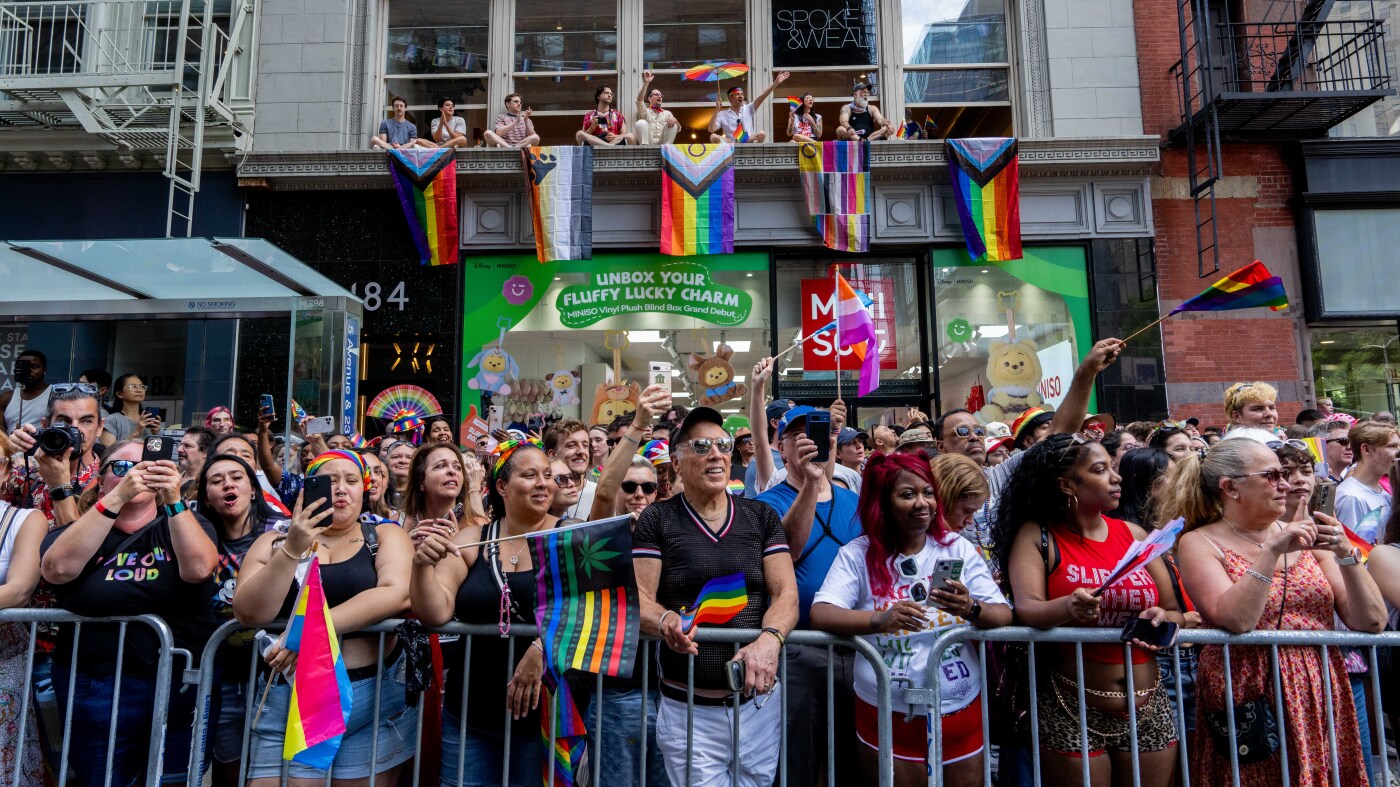The culmination of Pride Month in 2025 was a vibrant tapestry of celebration and activism, reflecting the enduring spirit of the LGBTQ+ community. As the month drew to a close, major cities across the United States and the globe became stages for both jubilant expressions of identity and fervent calls for justice. New York City and San Francisco, in particular, stood out as epicenters of this duality, where the air was thick with the energy of protest and the joy of solidarity.
A Legacy of Resistance and Celebration
Pride Month, rooted in the legacy of the Stonewall Riots of 1969, has always been a time to honor the past while pushing for a more equitable future. The events of 2025 were no exception. In New York City, the theme “Rise Up: Pride in Protest” served as a powerful reminder of the movement’s origins. The march, which drew an estimated 2.5 million participants and spectators, wound its way along Fifth Avenue, passing the historic Stonewall Inn. This national monument, a symbol of resilience, became a focal point for the marchers, who carried signs and chanted slogans that echoed the defiance of those who fought back against police raids decades ago.
San Francisco’s Pride festivities mirrored this blend of celebration and activism. The parade, which snaked down Market Street, was a riot of color and sound, with participants dancing to the beat of drums and the swish of rainbow flags. Yet, beneath the festive surface, there was a palpable sense of urgency. Speakers at the Civic Center Plaza rallied the crowd, calling for continued vigilance in the face of political challenges to LGBTQ+ rights.
The Political Battleground: Transgender Rights in the Spotlight
One of the most striking aspects of the 2025 Pride Month finales was the intense focus on transgender rights. Across the country, marchers and protesters directed their energy toward policies that had targeted transgender individuals, particularly those enacted during the administration of former President Donald Trump. These policies, which included restrictions on healthcare access, military service bans, and limitations on legal protections, had left deep scars on the community.
In New York and other cities, protesters wielded signs that demanded dignity and full inclusion. The messages were clear: Pride was not just a party; it was a platform for marginalized voices to demand systemic change. The protests were a stark reminder that the fight for equality is far from over, and that the LGBTQ+ community remains steadfast in its resistance to oppression.
A Global Movement: Pride Beyond Borders
The spirit of Pride extended far beyond the United States. Cities around the world, from Budapest to Sydney, held their own parades and demonstrations, each reflecting the unique cultural and political contexts of their communities. In Budapest, for example, Pride marchers faced both celebration and backlash, highlighting the ongoing struggle for acceptance in more conservative societies.
WorldPride 2025, held in Washington, D.C., brought together over 1,000 people for a rally and march on the National Mall. The event was a powerful display of unity, with participants addressing what organizers described as a “coordinated and systemic attack” on human rights. The rally featured a mix of cultural performances, including drag shows, and political speeches that underscored the importance of continued activism.
The Cultural and Historical Resonance of Pride
Pride’s modern iteration is a delicate balance of celebration and political activism, deeply rooted in history. The first Pride March in 1970 was itself an act of defiance, marking the anniversary of the Stonewall Riots. In 2025, Pride events continued this tradition by emphasizing that protest remains essential. The multicolored flags and exuberant music were not just symbols of joy but also of resistance. The message was clear: Pride is a stage for demanding systemic change, a platform for marginalized voices, and a reminder of the ongoing struggle for equality.
Impact and Outlook
The end-of-Pride-Month events of 2025 demonstrated the LGBTQ+ community’s ability to evolve and adapt its strategies for advancing rights and social acceptance. By marking their presence in historically and politically charged spaces, marchers and advocates kept conversations about equality and justice at the forefront of public discourse. As the political landscape continues to shift, particularly around transgender rights, these Pride events remain essential for mobilizing supporters, educating allies, and pressuring policymakers.
The spectacle of joy and resistance combined sends a powerful reminder: Pride is as much about honoring past struggles and victories as it is about facing contemporary challenges head-on. The legacy of Stonewall lives on through themes like “Rise Up: Pride in Protest,” ensuring that Pride remains a dynamic, potent force for inclusion, dignity, and human rights worldwide.
Conclusion: Pride as Enduring Spirit and Movement
The 2025 Pride Month culmination captured the complex identity of this annual observance—a dance of celebration and confrontation, rejoice and resist. In cities like New York and San Francisco, millions joined together not only to honor LGBTQ+ culture and achievements but also to renew their commitment to challenging injustice. The legacy of Stonewall lives on through “Rise Up: Pride in Protest,” ensuring that Pride remains a dynamic, potent force for inclusion, dignity, and human rights worldwide. As the movement continues to evolve, one thing is certain: the spirit of Pride is enduring, and its message of equality and justice will continue to resonate across borders and generations.

